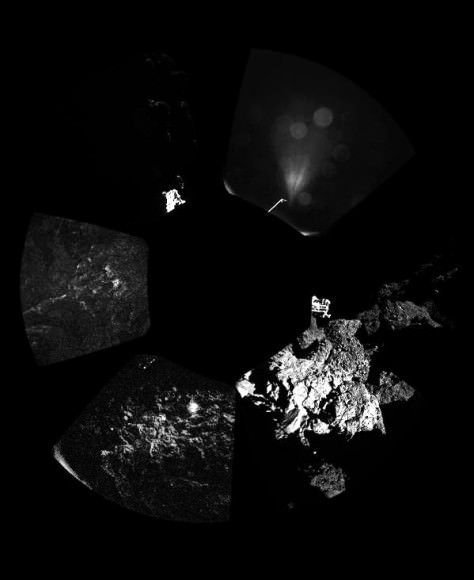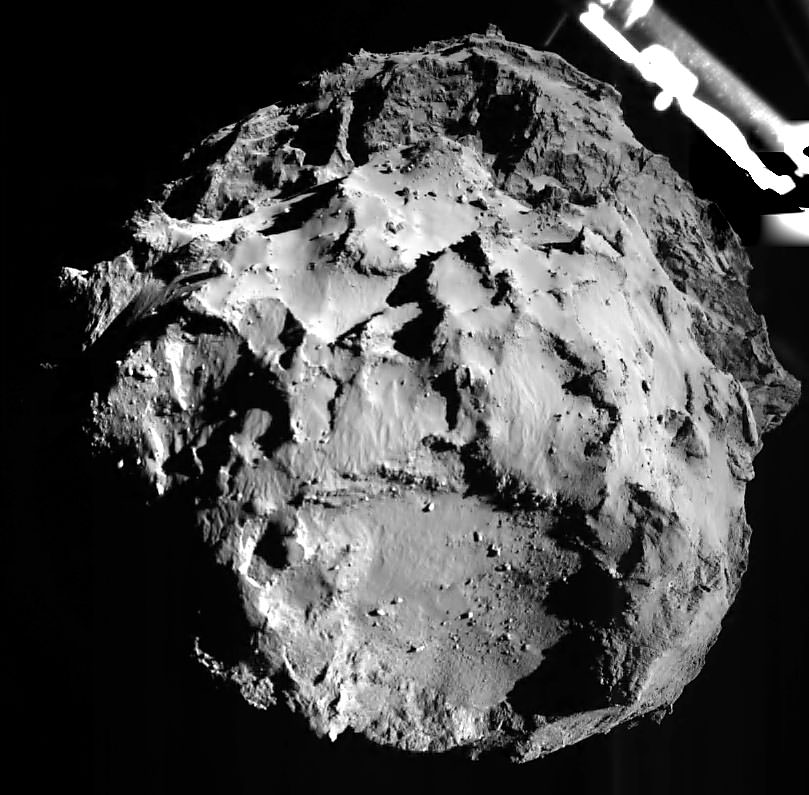Update, 10 p.m. EST: Philae is now asleep, according to the European Space Agency, for what could prove to be a long nap (at the least). It’s in “idle mode” with depleted batteries, and little sunlight to gain energy. For more information, check out this ESA blog post.
There’s power problems looming for the Philae probe after it made not one, not two, but three landings on 67P/Churyumov–Gerasimenko this Wednesday. The primary battery that the lander is using right now for its primary mission (a few days) is expected to run out in less than a day. As for surface comet observations for the next several months … that’s now in doubt.
Philae was supposed to touch down in a spot that provided seven hours of illumination per day on the comet (with a “day” there being 12.4 hours). But after doing a hop, skip and leap on the surface, the lander is now nestled in a spot that provides only 1.5 hours of sunlight daily to recharge the solar panels. “There is an impact on the energy budget to conduct science for a longer period of time,” the European Space Agency warned in a blog post.
Philae (and its parent craft Rosetta, which is in good health and will observe the comet from orbit through at least part of 2015) went sailing through space for more than a decade before Philae successfully touched down on the surface. After early telemetry came through showing harpoons had fired to secure the lander on 67P, more detailed information showed the harpoons had failed to fire. And this led to an incredible journey.
After touching down about where it was supposed to — controllers know this based on its descent camera and previous images from the Rosetta spacecraft — Philae then lifted off again and floated for nearly two hours. This is possible due to the extremely low gravity field on the comet, which had it drifting gently for one hour and 50 minutes.

Philae travelled about one kilometer (0.62 miles) in this time before brushing the surface. Then it began another seven-minute journey before settling down in its current location. Exactly where is not known.
“Preliminary data from the CONSERT experiment suggest that Philae could have travelled closer to the large depression known as Site B, perhaps sitting on its rim. High-resolution orbiter images, some of which are still stored on Rosetta, have yet to confirm the location,” the European Space Agency wrote in a blog post.
“The lander remains unanchored to the surface at an as-yet undetermined orientation. The science instruments are running and are delivering images and data, helping the team to learn more about the final landing site.”
So far, the team knows that the area has dust and other stuff covering the surface, and a panoramic image released yesterday suggests that at least one of the lander’s three feet is “in open space.”
Source: European Space Agency


What if… they could fire the harpoons? and thereby nudge or possibly move the lander? Be worth a try? Or maybe they could use the landing screws to change the tilt to topple upright?